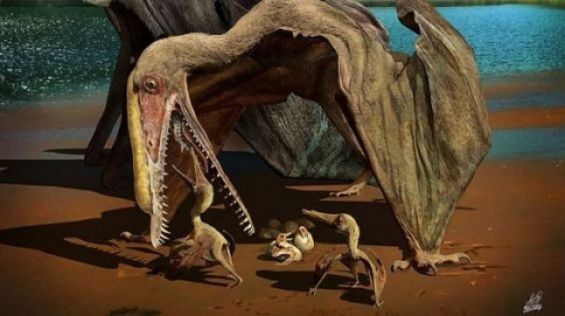A group of scientists has recently discovered three new species of flying reptiles in Morocco. These flying predators, according to researchers, lived in the Kingdom circa 100 million years ago, the Guardian reported Saturday.
University of Portsmouth paleontologist David Martill and a team of researchers from Morocco and the United States made the new discovery.
Together, they found out that during the middle Cretaceous, a geological period that lasted from about 145 to 66 million years ago, the Kem Kem beds, a geological formation along in southeastern Morocco, was inhabited by several species of pterosaurs.
«The new finds show that African pterosaurs were quite similar to those found on other continents», a university spokeswoman told the Guardian. «These flying predators soared above a world dominated by predators, including crocodile-like hunters and carnivorous dinosaurs. Interestingly, herbivores such as sauropods and ornithischian dinosaurs are rare», she explained.
Flying predators in southeastern Morocco
Relying on fossils from the middle Cretaceous Kem Kem beds of Morocco, scientists have managed to spot the diversity of the pterosaurs from this time. «Many of the predators, including toothed pterosaurs, preyed on superabundance of fish», the same source indicated, adding that they have wingspans of around four meters.

«We are in a golden age for discovering pterodactyls. This year alone we have discovered three new species and we are only into March», said Martill.
«These aerial fishers snatched up their prey while on the wing, using a murderous-looking set of large spike-like teeth that formed a highly effective tooth grab», the university spokeswoman said, adding that «large pterosaurs such as these would have been able to forage over vast distances, similar to present-day birds such as condors and albatrosses».
For the record, the Kem Kem beds pterosaur fauna includes at least nine species, researchers indicated in their latest study published in the Cretaceous Research journal. The recent study concludes, «toothed pterosaurs remained diverse during the mid Cretaceous before disappearing from post-Cenomanian strata».





 chargement...
chargement...













